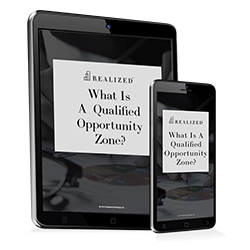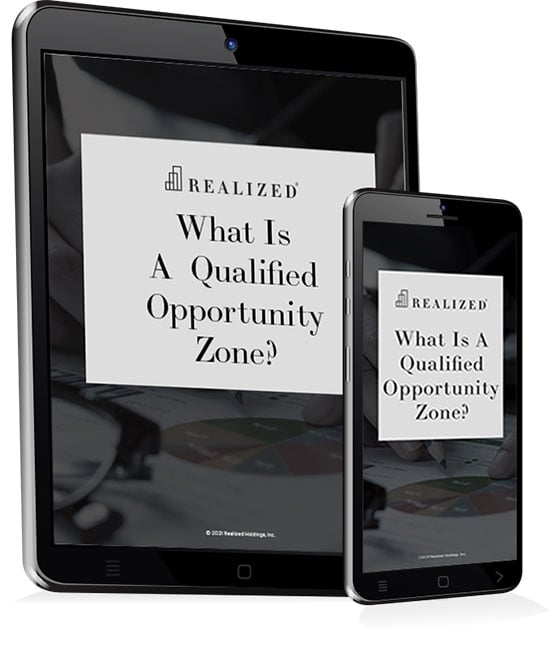In a world of low returns, institutional investors are turning to the private market. An influx of capital into private markets have pushed total investments to all-time highs. However, investors have to hold investments longer for those returns.
Private market investments such as Opportunity Zone Funds (OZFs) have a few tools at their disposal that may be able to boost returns, including the reduction or elimination of taxes on gains. These investments are gaining traction, and Venture Capital (VC) firms are taking notice. Let’s discuss how these investments are structured, and the two VC OZF funds available.
How Are VC OZFs Structured?
VC OZFs are simply OZFs. There’s no difference in the structure. The fund is still a Qualified Opportunity Zone Fund as designated by the IRS and is an SEC Regulation D: Rule 506(c) private placement compliant fund. Meaning, it is open to only accredited investors.
The main difference with a VC OZF is how investments into the fund are sourced and the particular goals of the fund. A typical OZF is real estate oriented. A VC OZF is focused on high-growth startups within an OZ. Its investors aren’t as interested in the real estate aspects of the OZF as they are the startups located in the OZ. They are looking for much higher growth (i.e., 10X return) than the 2-3X return in real estate. Additionally, VCs also have large capital gains tax liabilities from investments that can be deployed into an OZF.
VCs are used to waiting a long time to cash out, and that timeline has stretched recently, as companies remain private for a longer period of time. To get an idea of how long, here are a few examples:
- Uber: 2014—Series A, 2019—IPO, total VC holding period—5 years.
- Lyft: 2011—Series A, 2019—IPO, total VC holding period—8 years.
- Pinterest: 2011—Series A, 2019—IPO, total VC holding period—8 years.
In 2017, VentureBeat reported that the average VC holding time was 8.2 years. In the mid-2000s, holding times began a steady trend up, as noted by AngelBlog from a Jefferies Broadview report.
In order to gain the maximum OZ tax advantage, which is tax elimination, investors must hold their investment for ten years. That doesn’t seem like such a far stretch for VCs. Sure - they like to move in and out of investments, but an OZF will take a longer view. That also means businesses that VCs are investing in most likely won’t be aligned with a 3 to 5-year exit. Instead, these QOZBs will be focused on adding value to their local communities and helping them to grow.
The sudden interest by VCs comes about due to the April 2019 QOZ regulation updates, which added favorable terms for meeting the 50% rule:
- At least 50% of the services performed for the trade or business are performed in the qualified opportunity zone.
- At least 50% of the services performed (based on hours) for such business by its employees and independent contractors (and employees of independent contractors) are performed within the qualified opportunity zone.
- 50% of the gross income must be derived from a Qualified Opportunity Zone Business.
Before this update, a QOZB needed to generate 50% of its income in the QOZ. The additional qualifications open the door to more startups, which potentially means more VC OZFs.
Two Funds That Are VC OZFs
Before 2019, there were zero VC OZFs. The April 2019 OZF updates changed that. As of 2019, there are now two VC oriented OZFs.
The Pearl Fund - The First VC OZF
The Pearl Fund calls itself the first VC OZF. The fund is seeking to raise $25 million, “from investors with capital gains who are seeking tax-free venture capital returns.” The fund will invest in QOZB startups with the potential for 10X returns. Some of the QOZBs that the fund invests in overlap with other Federal, State, and City tax advantage programs, creating additional tax benefits.
WeFunder Opportunity Fund - A Micro-Venture Capital Fund
The WeFunder Opportunity Fund looks for startups within OZs. Investors receive notifications once a viable startup has been found and an investment made. WeFunder advisors vet and work with startups through mentoring.
VC oriented OZFs are completely new investment vehicles. Under the hood, they are standard OZFs that follow all of the IRS regulations. On the surface, they allow VCs to use all of their creativity in sourcing funds and setting goals, potentially generating the same returns associated with high-growth startups.
The Bottom Line
It’s clear there is significant room for growth in this asset class. It’s still in its very early days, but OZFs could be the next great investment opportunity for VCs.



